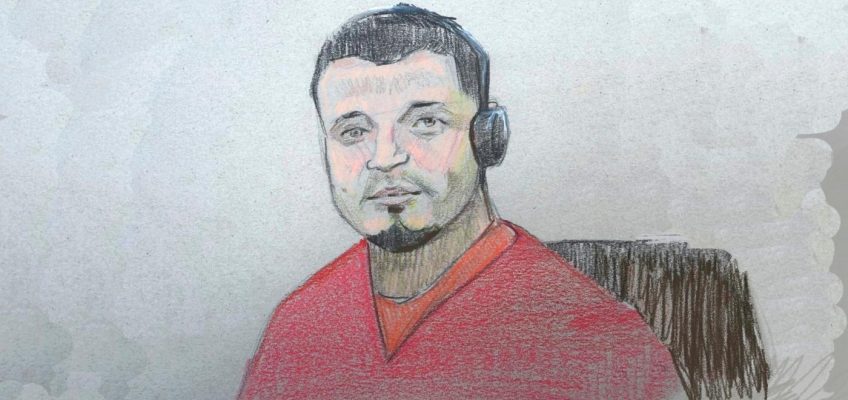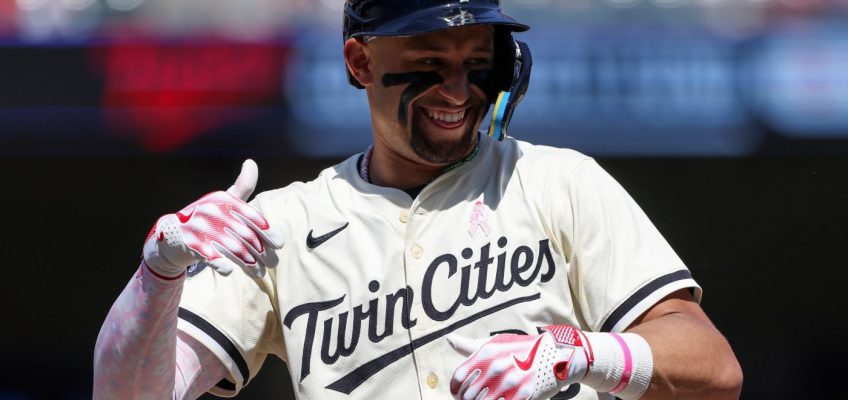By Anna Claire Vollers, Stateline.org
HUNTSVILLE, Ala. — Mike Leslie, 66, sits at a desk beneath the buzz of fluorescent office lights, his fingers hovering over his new laptop keyboard. He smiles, eyes crinkling beneath a worn baseball cap. It’s a place he never imagined he’d be sitting.
Before last year, he’d never used a computer.
For most of his life, Leslie hadn’t needed one. He spent 36 years in pipe manufacturing near his North Alabama hometown, in jobs that included welding, driving forklifts, mixing concrete and running crews as a foreman. The work was hard and physical, but he didn’t mind.
Then the COVID-19 pandemic hit. Layoffs followed.
Leslie found himself looking for a job to make ends meet, at an age when more affluent men might think of retiring. He was no longer suited for manufacturing work. But he also lacked experience with the technology that now powers even the most basic tasks in nearly every modern workplace, such as the internet, email and Microsoft Office.
“A lot of people think old people are obsolete, but they’re not,” he said. “There’s a lot of knowledge in their heads. They just need the opportunity to get it out and learn new things.”
His life’s unexpected second act began in late 2023, thanks to an obscure state-federal initiative called the Senior Community Service Employment Program. For people ages 55 and older with low incomes, it provides paid part-time work at local nonprofits and government agencies such as libraries, senior centers and the Red Cross. Its on-the-job training is meant to prepare participants to transition into permanent jobs.
But 700 miles away in Washington, D.C., Congress is considering axing the funding for the very program that has made this new chapter of Leslie’s life possible. In his budget for the coming fiscal year, President Donald Trump has recommended eliminating this and some other programs that fall under the Older Americans Act, a landmark 1965 law that provides social and meal services for older people. The U.S. House also proposed eliminating the employment program’s funding, while the Senate proposed keeping it.
At this point, experts say, anything is possible.
Advocates fear that the loss of this program, which serves about 50,000 older adults nationwide, could affect not just participants like Leslie, but also stretch further into communities, removing tens of thousands of employees from local libraries, city recreation facilities and senior centers.
Isolated and unsure
Sitting at home post-layoff, Leslie felt isolated and unsure about what to do next. A friend told him about the job program, and he eventually decided to apply. He got in.
Now he helps manage the fleet of vehicles at the Top of Alabama Regional Council of Governments, a multicounty agency based in Huntsville that provides support services to older Americans and people with disabilities. As part of the program, he enrolled in a digital certification program that provided him with a laptop, prepaid internet access and a 10-week education course that taught him the basics of the Microsoft Office suite, email, internet, social media and other skills.
For Leslie, it’s been a foothold into a workforce that felt like it had moved on without him.
“You’ve got purpose,” he says, “getting up every morning, coming to a job you like.”
He’s a favorite around the office, where everyone calls him “Mr. Mike.”
In April, he wore a three-piece suit to the officewide celebration where he received a graduation certificate for acing his digital skills courses. He made his co-workers cry as he told them about how the program had given him his confidence back.
‘Lost in D.C.’
On a recent Wednesday afternoon, in a conference room not far from Leslie’s desk, some of his managers at the Top of Alabama Regional Council of Governments, known as TARCOG, were sitting around a table discussing what to do.
It had been a chaotic few months. TARCOG is responsible for administering many services for older people, from Meals on Wheels to transportation, caregiver support to services that prevent abuse and exploitation.
Earlier this year, the Trump administration began to dismantle the federal agency responsible for overseeing such services, while his proposed federal budget recommended cutting or freezing spending on them, including the employment program.
Michelle Jordan, TARCOG’s executive director, had been fielding questions from local leaders who were aghast that Meals on Wheels might be canceled. Across the country, national and local advocates at similar agencies sounded the alarm. In some states, local groups like TARCOG have reported delays in receiving federal funds they were promised.
Earlier this month, the Trump administration reversed course and recommended that most of the programs for older adults continue under a new federal agency.
“These are people who worked hard all their lives. But they can’t pay the heating bill. They have to decide between medicine and groceries.”– Nancy Robertson, former executive director of the Top of Alabama Regional Council of Governments
But a few of the Older Americans Act programs would be left without funding. One of the largest is the senior employment program.
“These are real people, and I think that gets lost in D.C.,” said Sheila Dessau-Ivey, who directs the aging programs at TARCOG. “They just see programs and dollars, and say, ‘Well, we don’t need these.’ But those dollars are actually attached to a human life.”
The Senior Community Service Employment Program is a tiny fraction of the size of budgetary behemoths such as Medicaid and Medicare. Its budget is about $400 million and it serves about 50,000 older people nationwide each year. Eighty-six of those slots — including Leslie’s — are in the five-county swath of North Alabama served by TARCOG.
To qualify under the nationwide Senior Community Service Employment Program, a person must be at least 55 years old, unemployed, and have a family income of no more than 125% of the federal poverty level. For an individual, that’s currently$19,562 a year. Veterans are given priority in the program, as are people with disabilities, rural residents, people over age 65 and those experiencing homelessness. Funding comes mainly through the U.S. Department of Labor.
“We’ve had workers who were homeless when they started this program,” Jordan said. Past research found about 3 in 5 participants nationally reported being homeless or at risk of homelessness.
“You forget there are people living with us, sitting next to us in church, going to the grocery store with us, who just don’t have those skills or that confidence,” she said.
And it has an outsize impact on other vulnerable groups. In 2019, about two-thirds of participants were women, and about 44% were Black, according to research. A majority of participants reported having a high school diploma or less.
“These are people who worked hard all their lives, but they can’t pay the heating bill,” said Nancy Robertson, TARCOG’s retired former executive director, who’d come into the office to lend her experience to the group discussing how to advocate for funding.
“They have to decide between medicine and groceries.”
The program participants aren’t the only ones that would be hurt by the loss of the program, she said.
Participants can stay in the program up to four years. While they’re there, they provide more than 40 million hours of work to public and nonprofit agencies across the nation. The agencies and community groups that hire the participants — with salaries paid by the program — would lose those employees. An employee working in a small-town library, for example, might be the only reason the library is able to remain open for certain hours.
In Huntsville, the local senior center would lose 14 of its employees if the employment program closes. Across town at a community rec center, a beloved 91-year-old receptionist would lose the job she trained for.
As ICE raids intensify, how do employers know if their workers are legal?
Prosecutor says Sean ‘Diddy’ Combs thought he was above the law as he led a racketeering conspiracy
Majority of US adults support religious chaplains in public schools, a new poll shows
Pentagon leaders cite military tactics to show destruction from US attacks on Iran
Today in History: June 26, US Supreme Court legalizes same-sex marriage
Congressional chaos
The U.S. population is aging rapidly. In 2003, about 1 in 7 people in the U.S. labor force was 55 or older. By 2023, that share was nearly 1 in 4. One of the looming challenges for lawmakers and community advocates is how to keep older people healthy and thriving.
As Republicans consider adding work requirements to programs like Medicaid, cutting funding for a work program designed to help older people doesn’t make sense, said Marci Phillips, director of public policy and advocacy at the National Council on Aging, a nonprofit organization focused on issues that affect older adults.
“If people age 55 and older have to show they’re working to qualify for Medicaid, but [lawmakers] are cutting the federal program to help workers age 55 and older, there’s a disconnect there,” she said.
Some lawmakers question the usefulness of the program. In 2019, only about 38% of participants who exited the program were employed a few months later, according to a 2022 study. That share was below the U.S. Department of Labor’s goal of 42%. Median earnings were also below federal goals.
Phillips said the program shouldn’t be judged by the metrics that are used to measure whether a traditional workforce development program is succeeding.
“These are older adults who have to work, but the realities of their health and their caregiving situations aren’t changing,” she said. “It’s a standard that doesn’t really recognize the population we’re trying to serve.”
Programs that are funded under the Older Americans Act are discretionary, meaning Congress can’t cut or eliminate them in the reconciliation bill that’s currently before the Senate and that has generated public outcry over potential cuts to programs including Medicaid and the Supplemental Nutrition Assistance Program, commonly known as food stamps.
Trump has recommended eliminating funding for the employment program, but ultimately its fate lies in the hands of Congress.
The U.S. House is scheduled to take up the appropriations bill that provides funding for these programs the week of July 20. The Senate’s plans are less certain, as its members remain focused on Trump’s reconciliation bill, the One Big Beautiful Bill Act. And it’s conceivable, Phillips said, that Congress may instead pass a continuing resolution, a temporary measure that keeps the government funded at current levels.
For his part, Leslie would like to travel to Washington to testify before Congress. If anyone understands the needs of older Americans, he figures, it’s them.
“Society looks at older people as not useful, but if you look at the people in Congress, they’re old folks too,” Leslie said. “If you’re old, why would you not want another older person to have something, to learn something?”
Future possibilities
Leslie is studying to earn his license as a private investigator. It’s a job he’s always wanted, and now he feels like he has the skills he needs to chase that dream.
He’s also trying to organize a workshop this fall to be held at his church, Beaver Dam Primitive Baptist, where he hopes he and some of his TARCOG co-workers can share about services and programs available to help older adults.
“We’ve got 26 churches in our association, so we’ve reached out to all of them, saying there’s these things you need to know about,” Leslie said. “If I had known about some of this stuff when my dad was living, he may have had a better quality of life.”
He doesn’t know if his own program will be one of those still available by then, but he’s hopeful.
He believes the biggest reward has been less tangible than the modest paycheck and newfound computer skills, but more profound: The sense that his life has opened back up, full of possibilities.
“Senior citizens have a purpose in this world, and we can’t think that because they’re old we can just throw them away,” Leslie said. “They’ve still got knowledge. I think we should give them every chance to succeed.”
©2025 States Newsroom. Visit at stateline.org. Distributed by Tribune Content Agency, LLC.




